Civic Creative Base Tokyo [CCBT] opened in Shibuya on October 23, 2022, to serve as a hub for people from all walks to life explore their creative potential through the use of digital technology. In fiscal year 2022, CCBT selected five artist fellows as partners to embody the four pillars of its mission: Inspire, Co-Create, Incubate, and Network.
![]()
![]()
事務局からのお知らせ
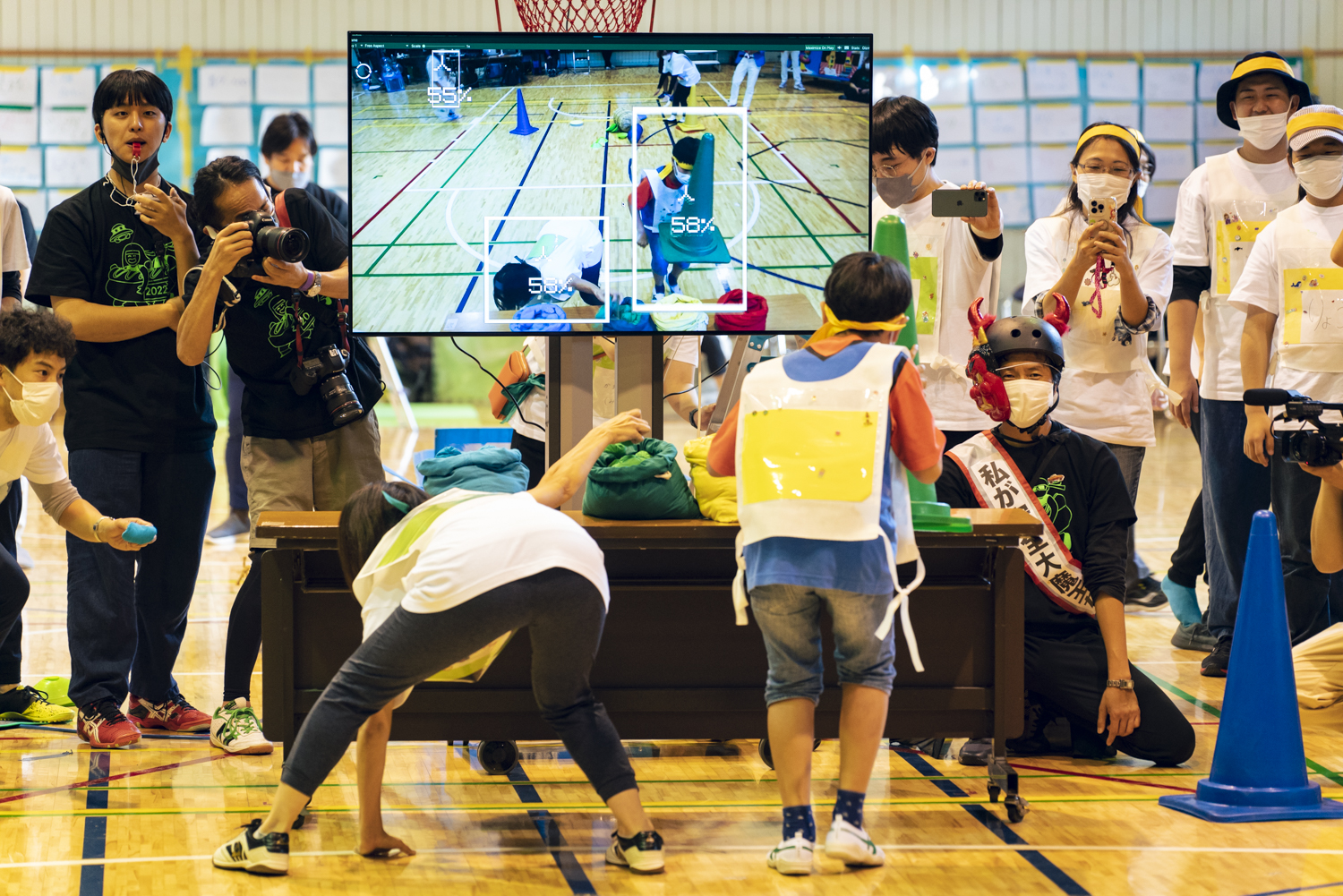
On CCBT’s opening day, artist fellow Hiroshi Inukai and the “developlayers” held an opening event titled Future Tokyo Sports Day. We will report on this event below, then introduce CCBT’s plans for showing the work of other artist fellows.
Sports Day Hackathon: Brainstorming ideas with all participants
Future Sports Day is a sports and art co-creation program that was launched in 2014 by game creator and esports producer Hiroshi Inukai. It has since been held in various locations across Japan. The program proposes a new style of Sports Day (undokai) in which participants take on the role of “developlayers” who simultaneously develop new Sports Day events, play them together, and then share them with each other.
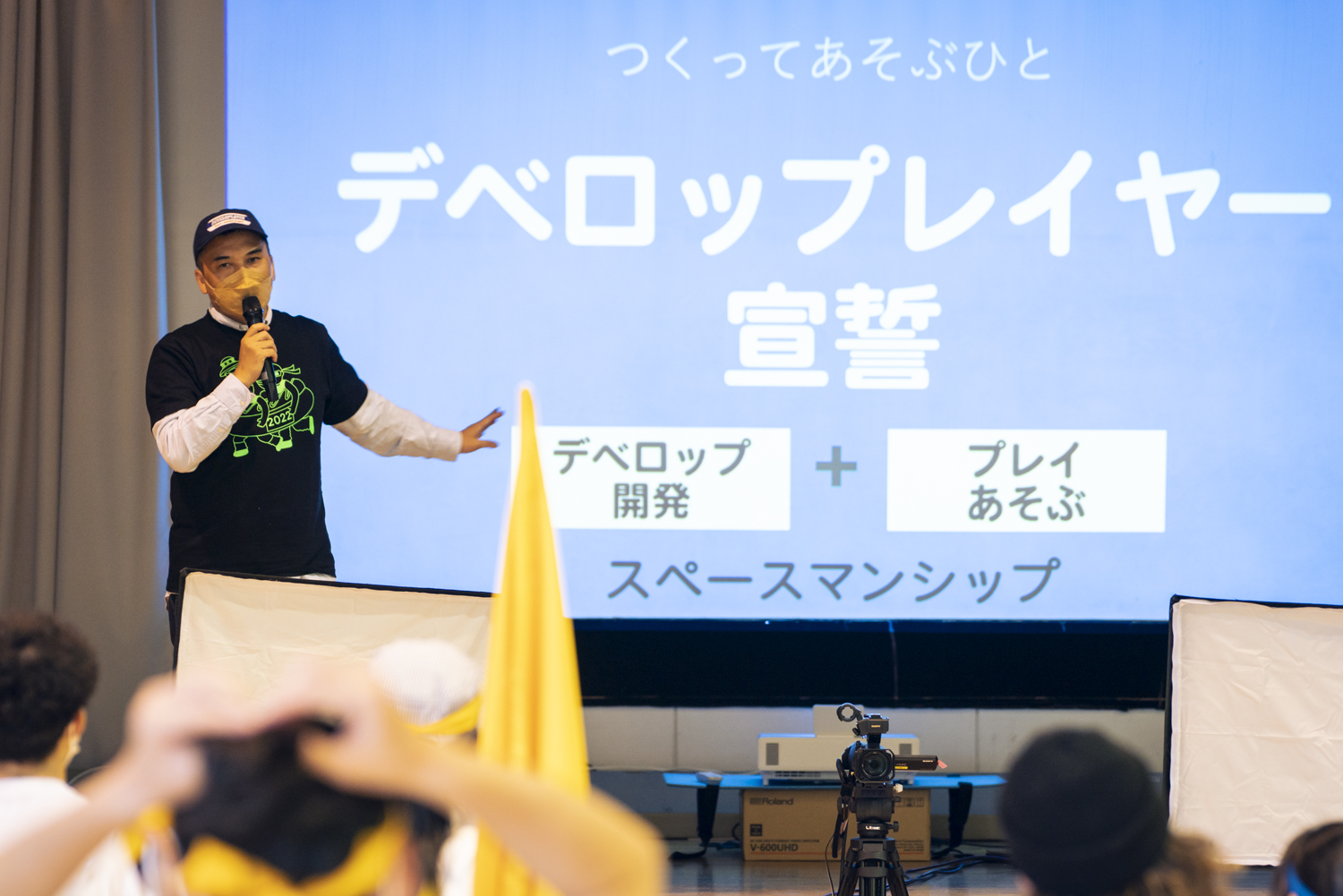
To develop new Sports Day events, a Sports Day Hackathon was held from Saturday, October 22, the day before Sports Day, right up to the main event on Sunday, October 23. In total, about 60 people participated in the program, including experienced developlayers who had grown up through the Future Sports Day project, as well as children and adults who had participated in the previous co-creation workshop held in September. Their first task was to discuss their opinions and ideas on what kind of events should be held on Sports Day.

Imagining a “future Sports Day in Tokyo,” each participant wrote down whatever words came to mind, then voted on each other’s ideas by sticking stars on their favorite words. Popular words were further grouped together based on shared keywords such as “AI,” “lasers,” and “Tokyo.” Participants then split into four teams according to which keywords they were interested in. Each team brainstormed a new sports event based on the requirements that the event could be 1) completed in 20 minutes or less and 2) played by four competing teams.
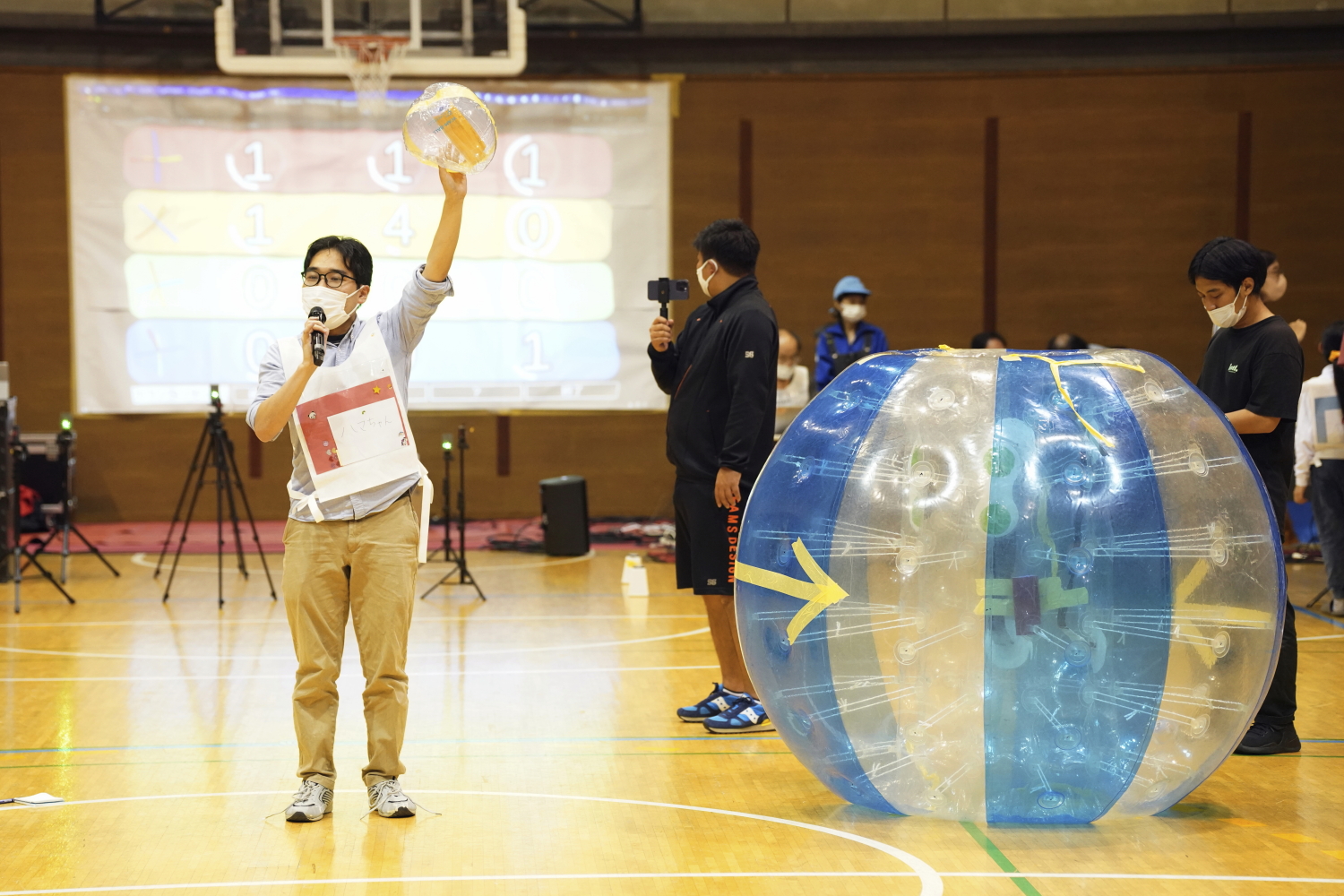
To enable less tech-savvy participants to express their opinions without hesitation, senior developlayers brought out digital tools and handmade items they wanted to see used in the event and gave presentations on them to the participants. Participants also tried out various tools available at the venue. By doing this, every participant was able to contribute their input during the process of creating the framework and rules for the event.
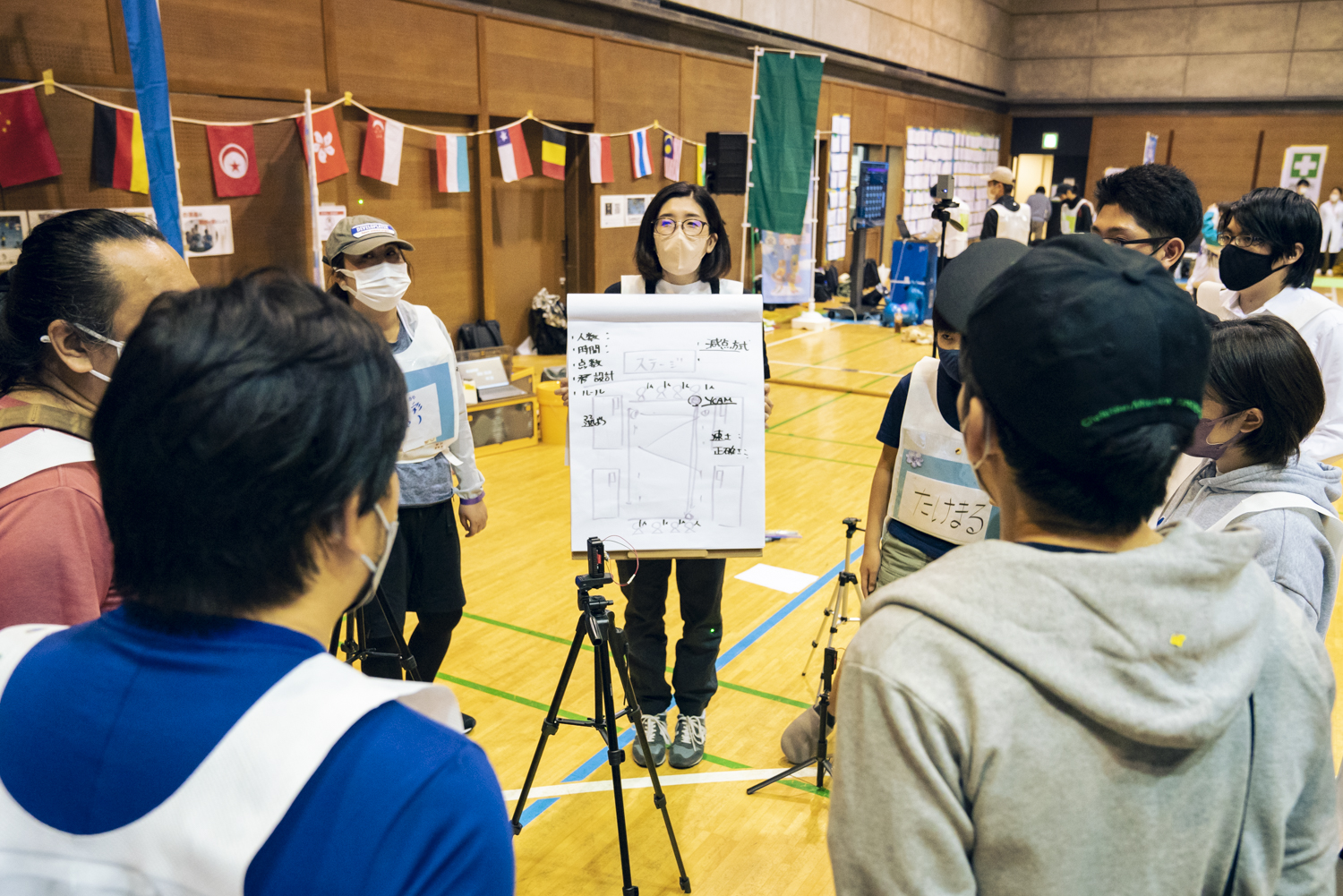
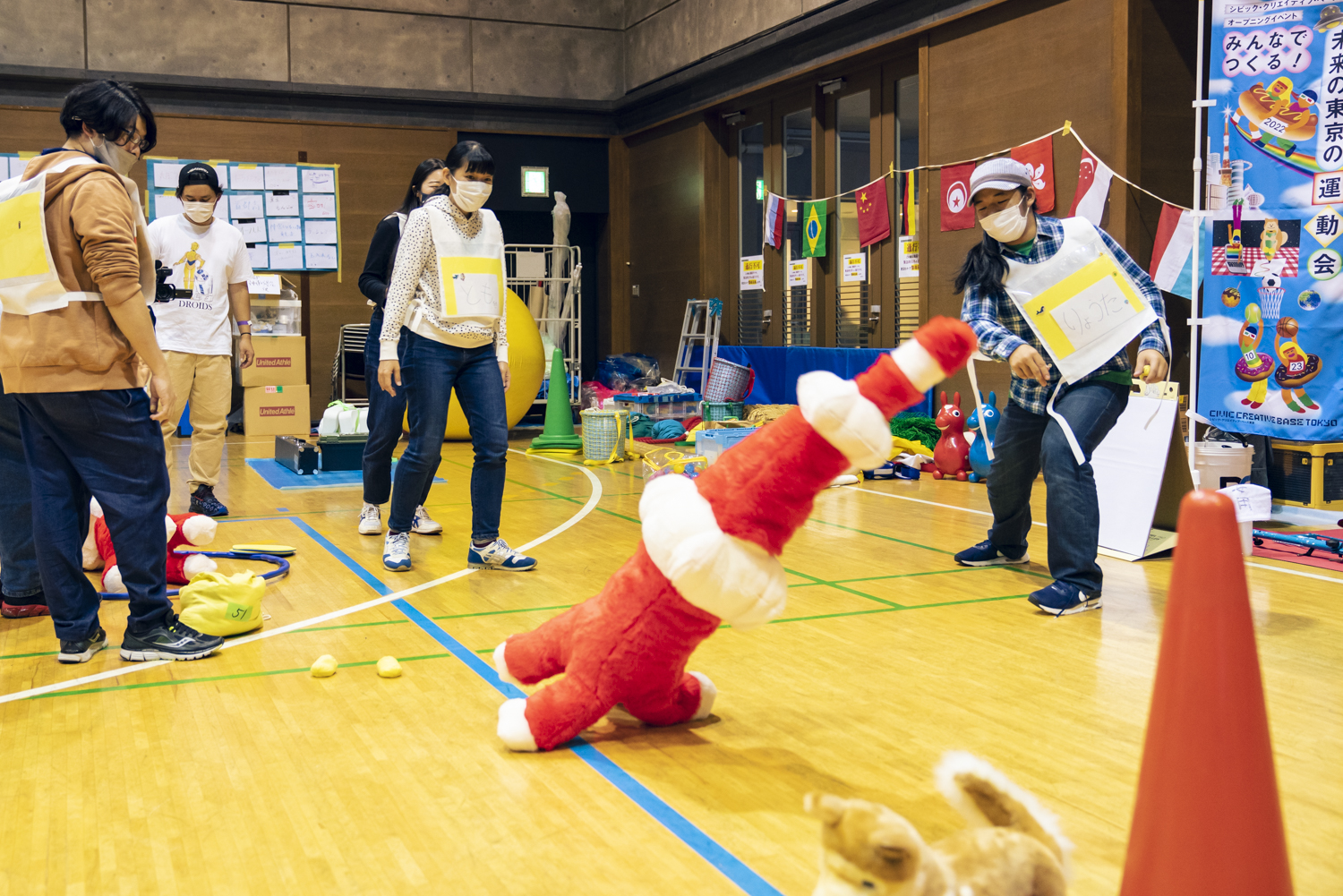
Finally, the entire team tried out their event together and discussed issues with the rules and their ideas on how to make it more interesting. By the end of the Hackathon, each team had created a new Sports Day event.
Future Tokyo Sports Day was held
Finally, on Sunday, October 23, which was CCBT’s opening day, Future Tokyo Sports Day was held nearby in the Shibuya Jinnan Elementary School Gymnasium. About 100 participants, divided into four teams, competed in the events that everyone had created the previous day.
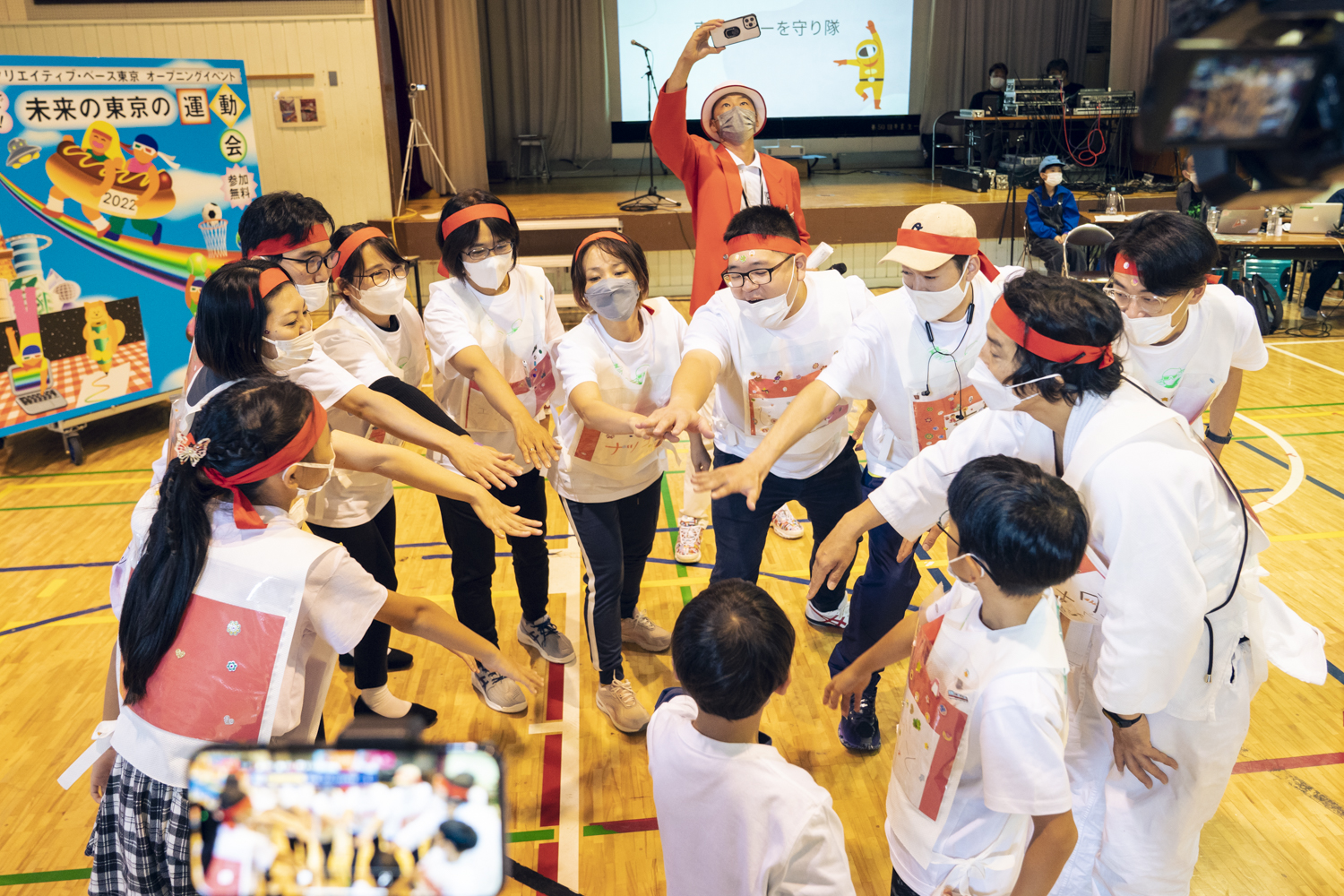
Tomo Kihara, a CCBT’s artist fellow like Inukai, also participated in one of the competitive events. Titled “No Longer Human?!—Deceive AI,” this event was devised by his team to take advantage of the weaknesses of AI facial recognition technology built into cameras.
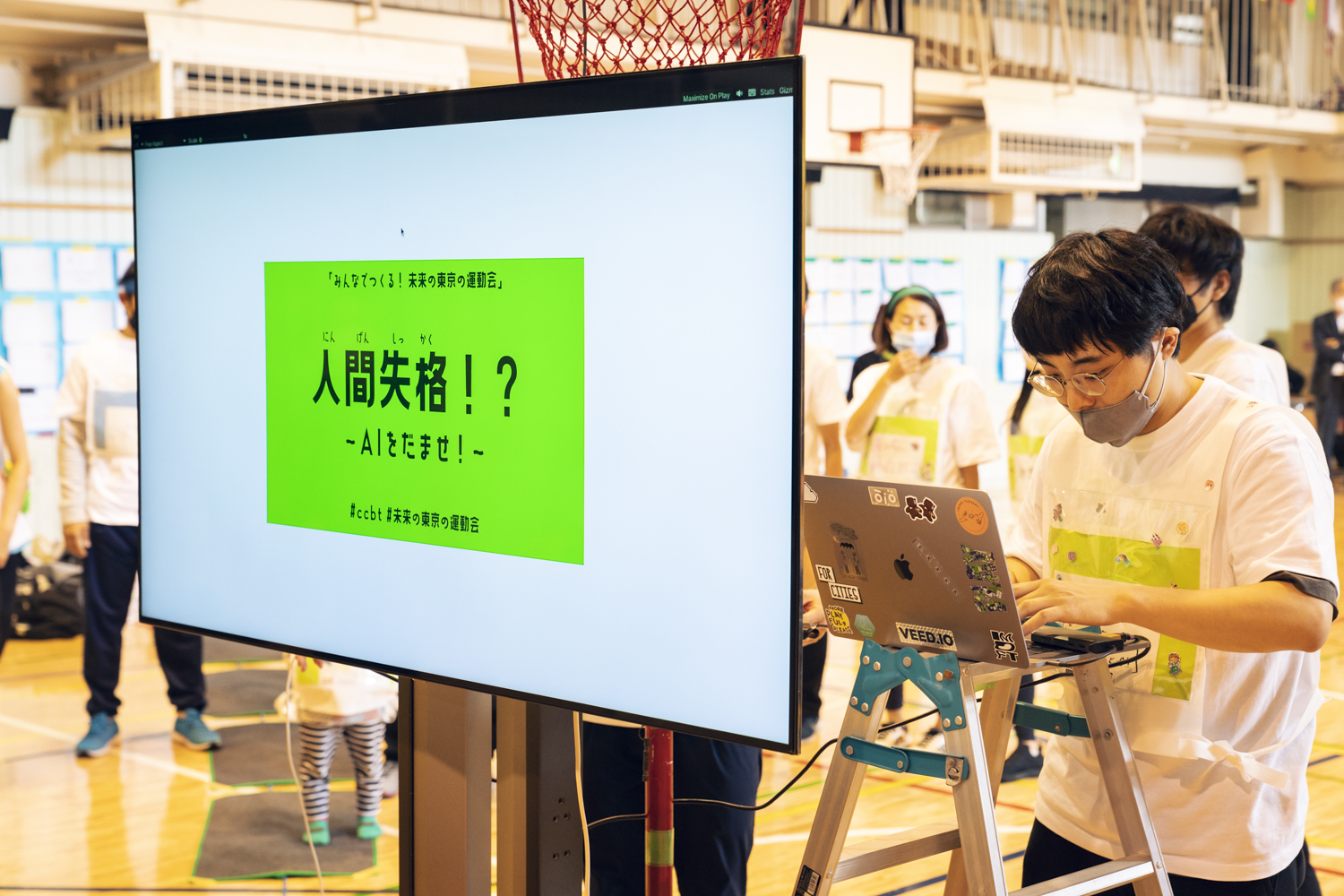
In this event, teams must retrieve balls from a basket placed in front of the camera without being recognized by the camera as “human.” The team with the most balls wins. Players use various items that were provided to hide their faces and bodies or walked with their bodies bent over as they approached the camera. Adults and children alike devised all sorts of unexpected maneuvers to avoid being recognized as human.
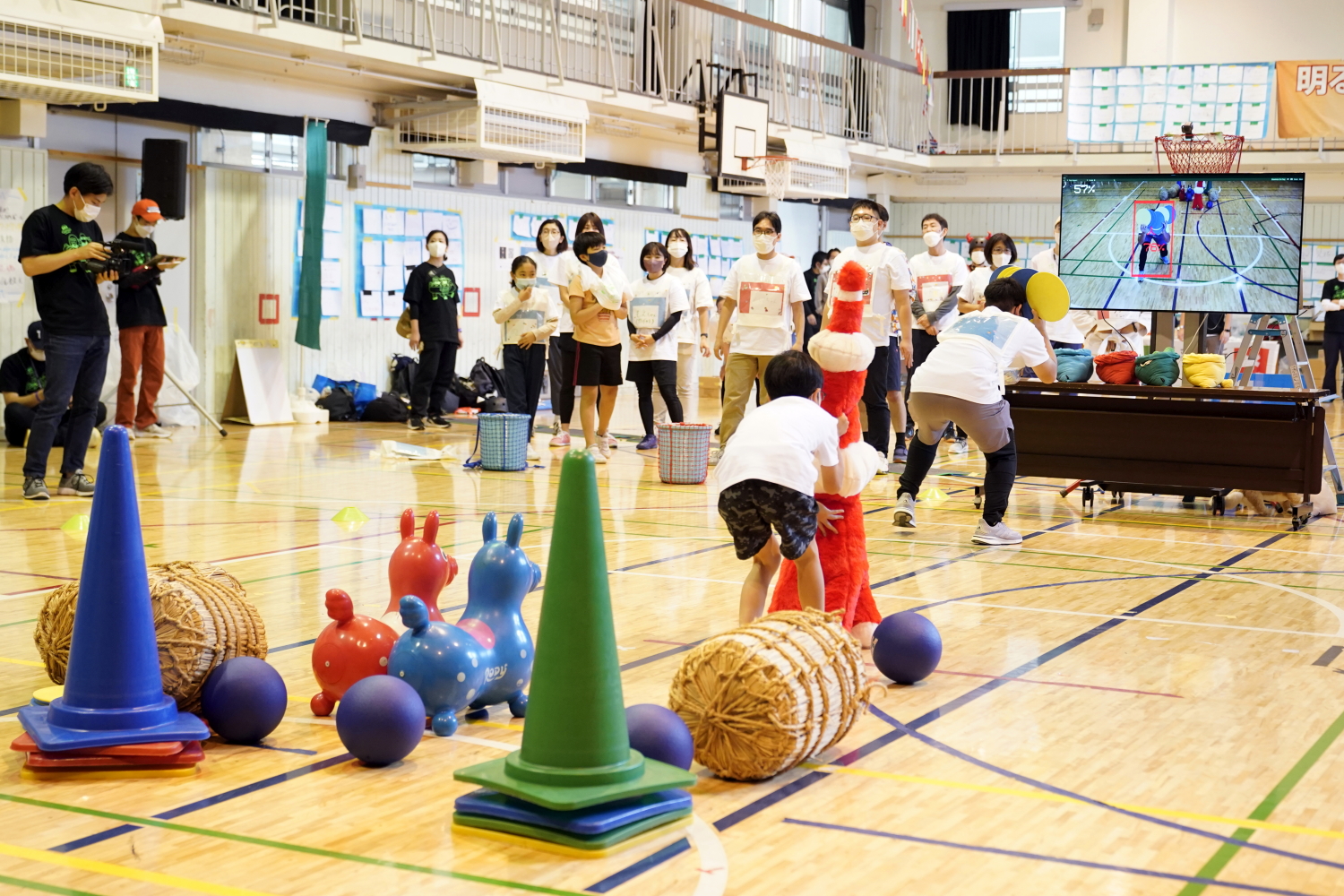
In another event called “Defend Tokyo Tower,” teams competed against each other by throwing balls at an opposing team’s “Tokyo Tower” to knock it down. Once the tower fell over, everyone collected the balls, and the team with the most balls won.
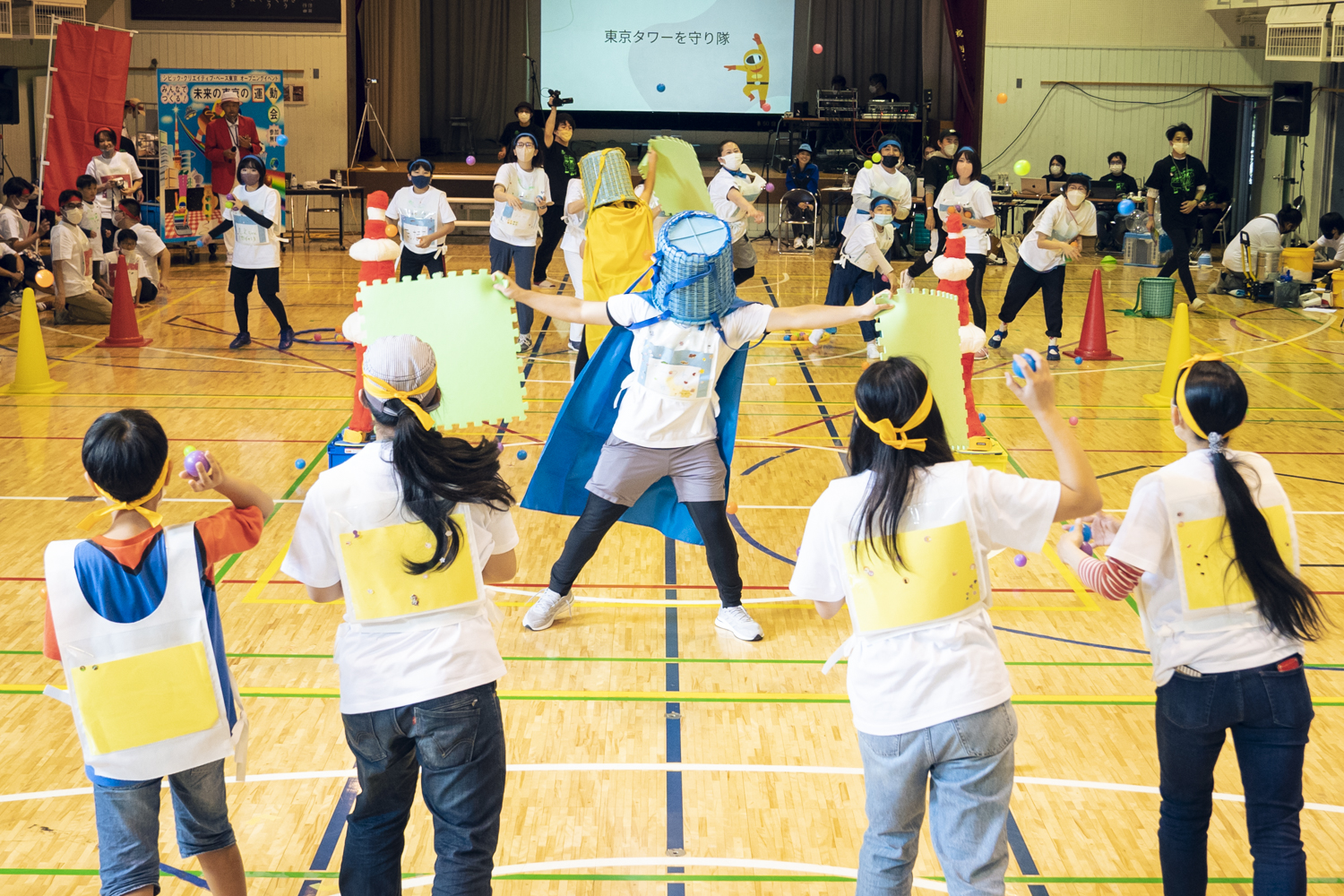
In “Spinning Soul,” players earned points by spinning four objects of different sizes, such as a rice bale, giant ball, and dice. Each object contained a computer with a sensor that counted the number of rotations, and teams competed to get the highest score by multiplying the number of rotations completed by each object. The game was complicated by the fact that rotating objects in the wrong direction would reduce the number of points, and teams had to think about multiplication while playing.
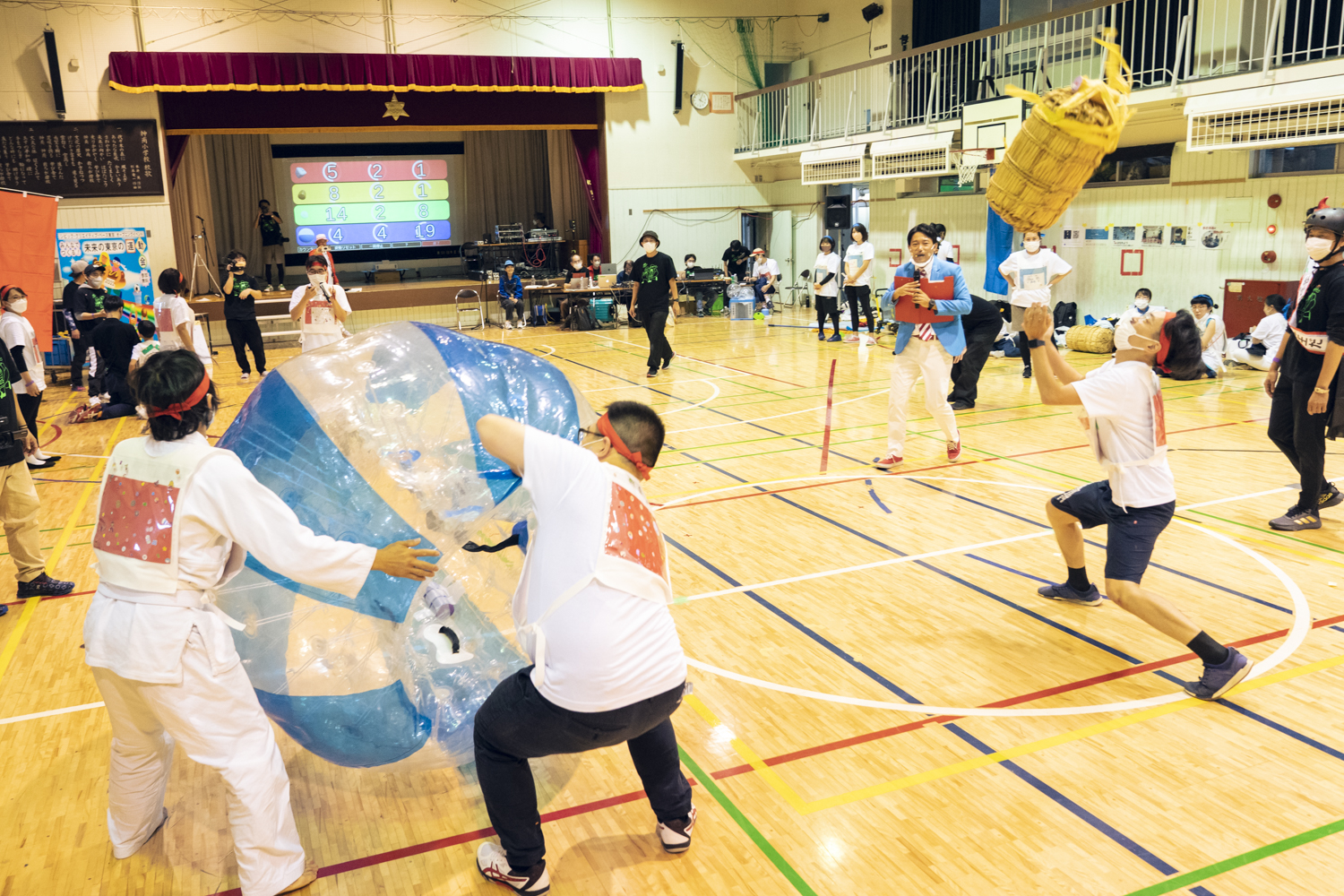
Participants also competed in new events created during the Hackathon that used technologies devised at the co-creation workshop. For example, in “Mission Impossible: Dodge the Lasers to Reach the Goal,” players competed in a relay race in which they carried obstacles to the goal while crouching and jumping to avoid the lasers emitted by a machine.

Before each event, the team that developed the event explains the rules themselves. However, if other teams have questions about the rules or ideas to improve the event, they are allowed to use “developlay cards” to suggest rule changes.
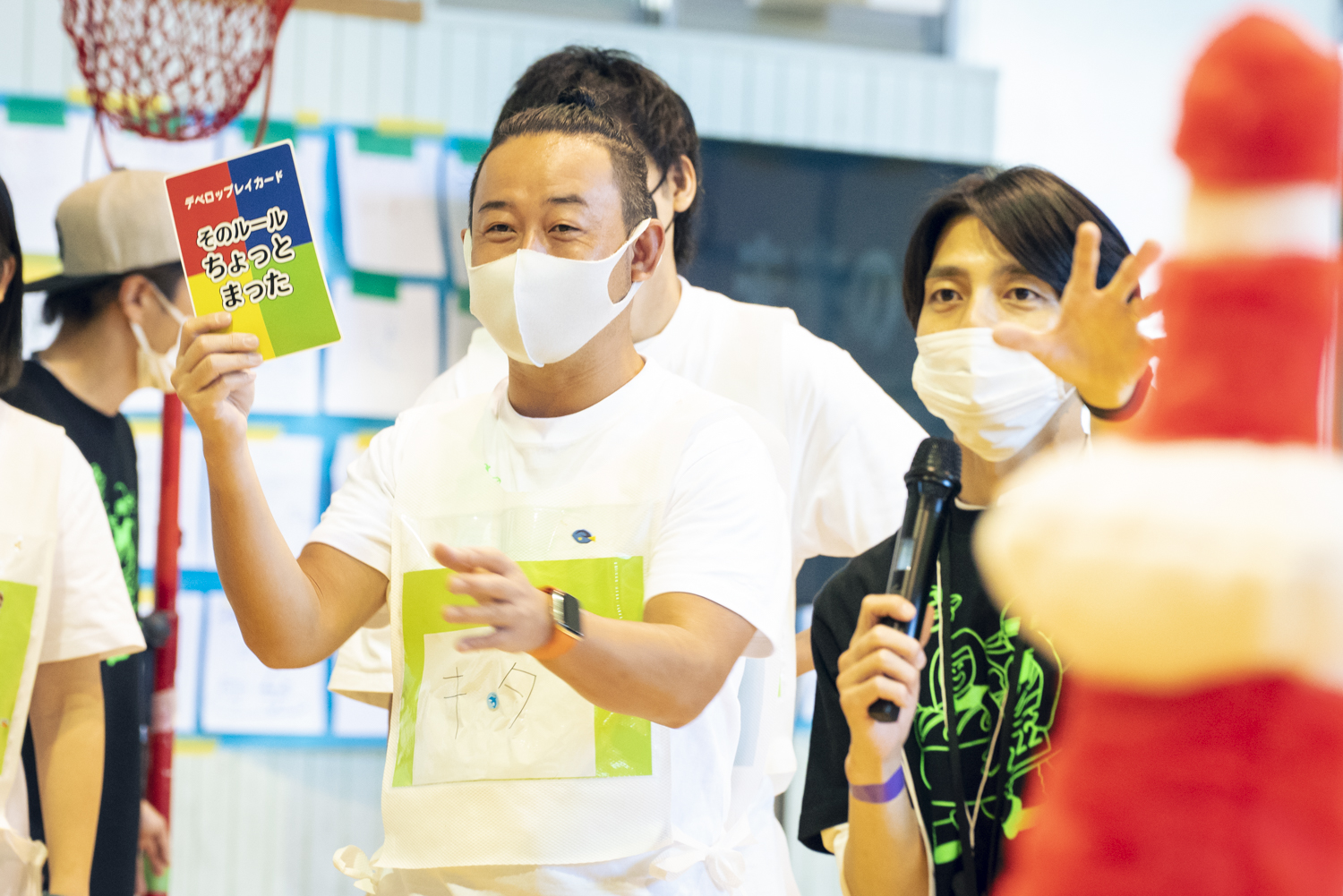
To use these cards, teams simply need to shout out, “Wait a minute!” It was inspiring to see how everyone shared their opinions and co-created Sports Day together to create a more enjoyable competition.
Voices of Participants
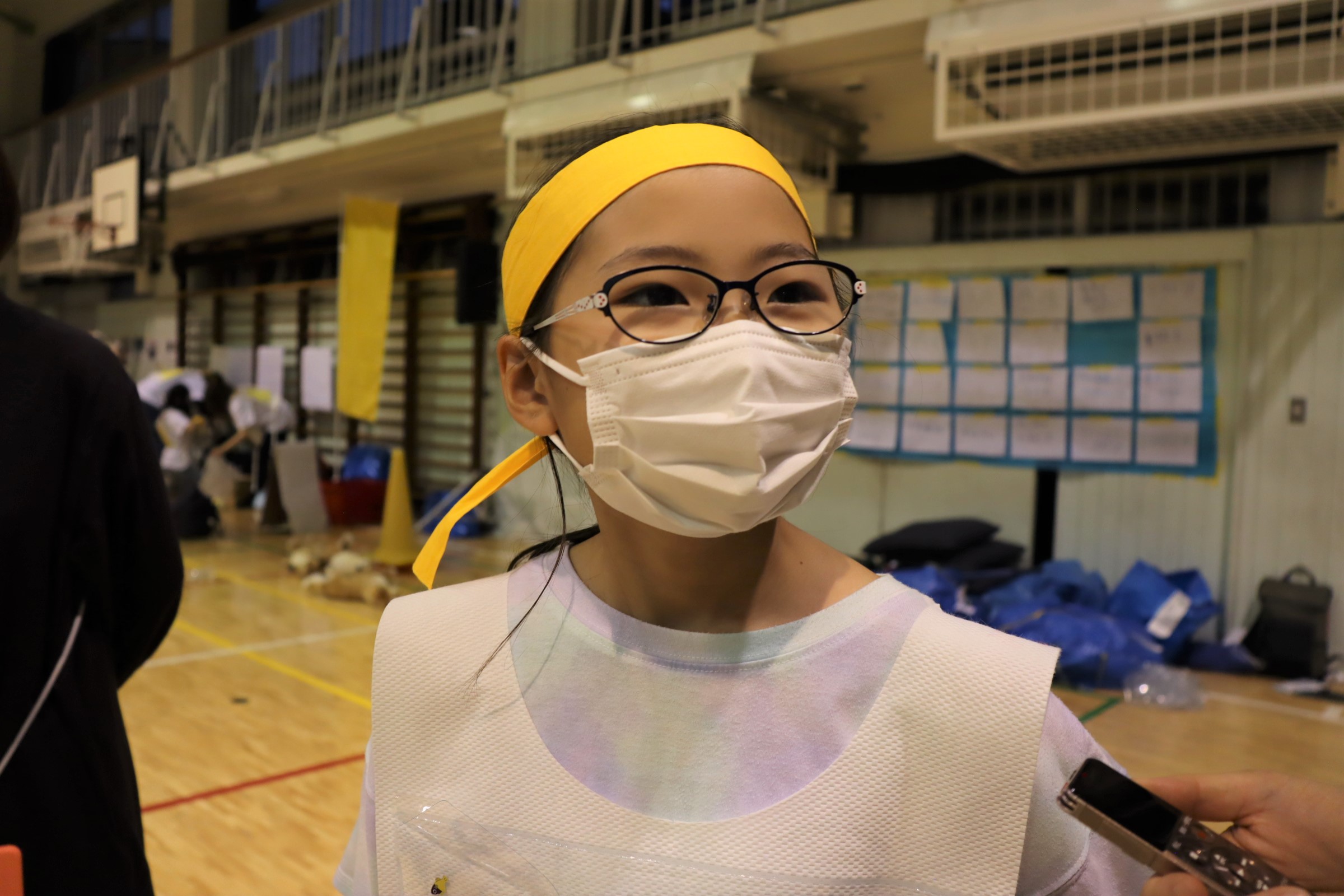
Sports Day participant Seina Nakagawa (age 9) said, “We all cooperate with each other during Sports Day at school, but this Sports Day felt more like I was participating as an individual.” She was able to experience the joy of creating something as a team through her own proactive involvement.
Graduate student Daiki Ito (age 23), who participated in Sports Day for the first time, said, “I had never thought about incorporating technology into an analog event like Sports Day before, so it was a very fresh experience for me. I program games for fun, and this Sports Day gave me the opportunity to talk about game development and creative activities with members on my team. I will treasure these new connections.”
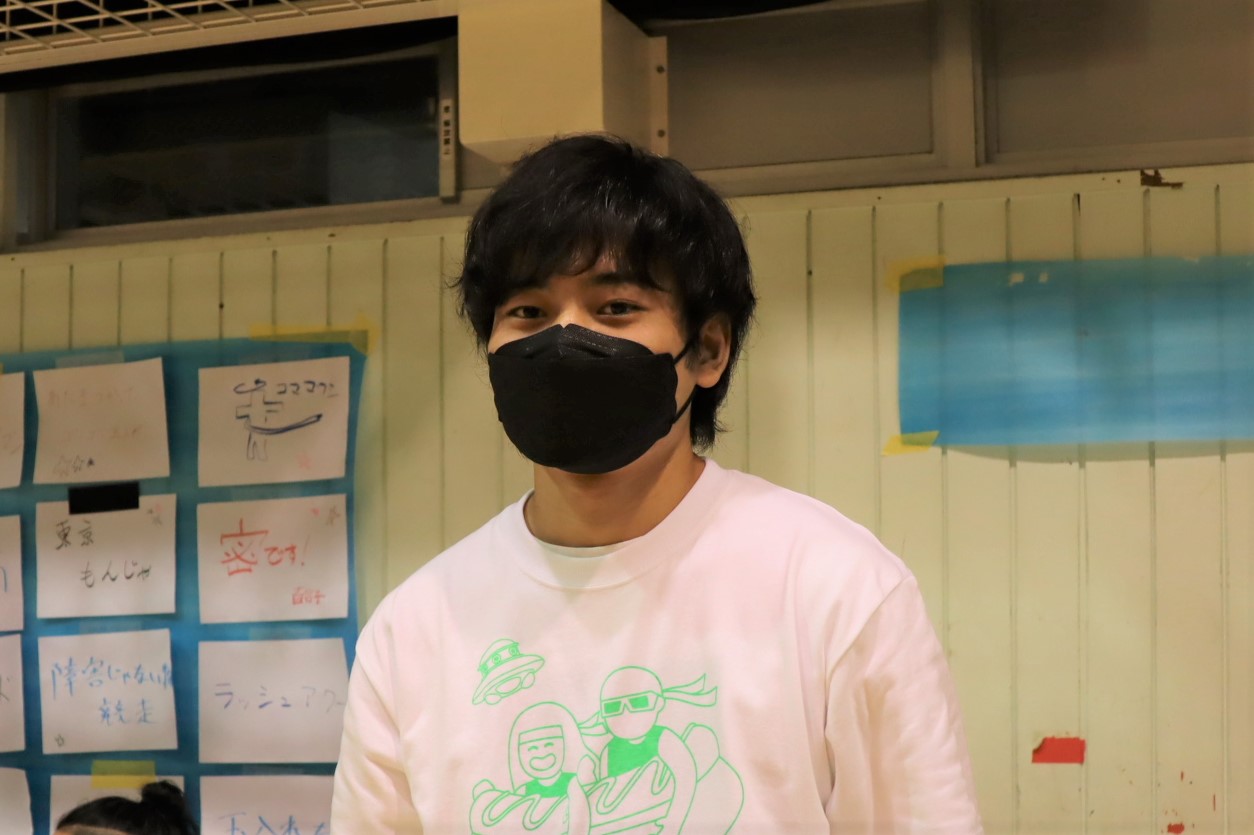
Meanwhile, Tomo Kihara, a CCBT artist fellow and participant in both the Sports Tech Co-Creation Workshop and Sports Day program, said he made some discoveries when he saw children in action on the actual Sports Day.

“AI has a hard time recognizing the unpredictable movements of children. One time, it even misidentified a child as a tennis racket (laughs). AI is not perfect. Even after it learns something once, “holes” remain in the system, and we were able to spot those biases. This is actually a very important concept. It gives us the opportunity to think about how, for example, an AI camera in a self-driving car could be very dangerous if it is unable to recognize the unexpected movements of a child. This event actually shed some doubts on whether recognition and action—the tasks of making decisions and executing them, in other words—could be entrusted entirely to digital technologies. I produce a line of “Toys for Thought” that bring new perspectives to society through the world of play, and this “No Longer Human!?” can be counted as one of them. I think we were all able to experience together how art can help us to question the things we take for granted in our daily lives.”
Feedback from the participants made it clear that this Sports Day program truly embodied CCTB’s mission of Inspire, Co-Create, Incubate, and Network. Please keep an eye on CCBT’s future activities, which will be opportunities for people to connect and create at the intersection of art and technology.
Reporting and text: Mikiko Chino
Photography: Motoi Sato
Shows and exhibitions featuring the five FY 2022 artist fellows
Through Art Incubation, one of CCBT’s core programs, five creators from the Co-Creation Model and Open-Call Program were selected as artist fellows for fiscal year 2022. The program supports artist fellows with up to 10 million yen for production expenses and helps them to make their projects a reality by providing production space, equipment, technical support, and advice from mentors and other experts.
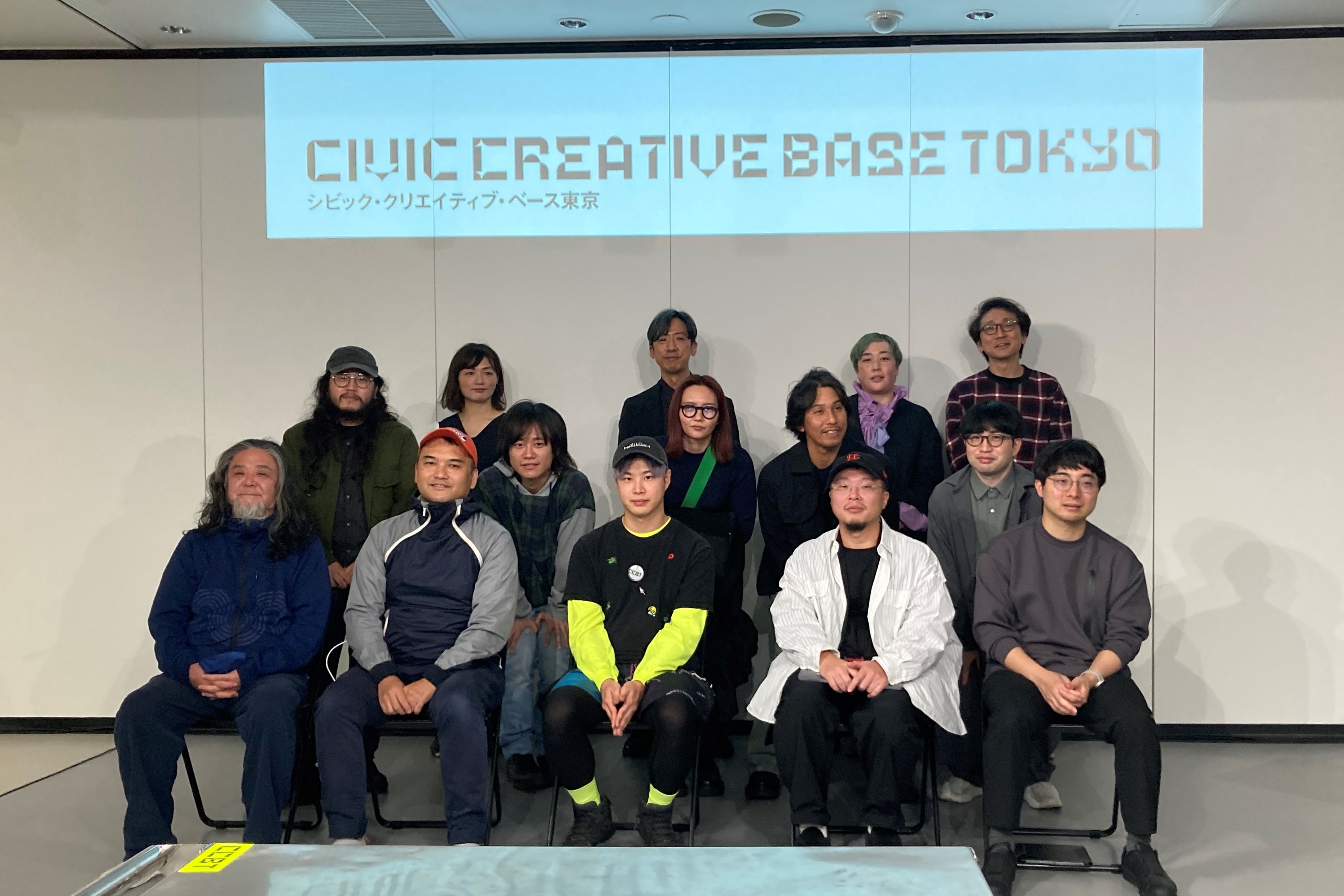
A series of shows and exhibitions by the artist fellows have been held, starting with the unveiling at the Yebisu International Festival for Art & Alternative Visions 2023 (February 3–19, 2023) of FORMING SPHERES, a new work by Asao Tokolo + Tomoki Hiramoto + Kota Iguchi, the three creators who were involved in producing the drone performance at the opening of the Tokyo 2020 Olympic Games.
On Sunday, February 26, Hiroshi Inukai and his team took to the stage for the Future Tokyo Sports Day Documentary Premiere Screening, a documentary that followed the activities leading up to Future Tokyo Sports Day. In March, three creators selected through the Open-Call Program hosted workshops and exhibitions based around an original game co-created by humans, an AR exhibition set in the city of Shibuya, and a new work in a video series that captures changes in the urban landscape from the POV of a skateboard. Please stop by to experience the diverse expressions emerging from CCBT in the form of new art and technologies.
■About the Facility
[Name of facility] Civic Creative Base Tokyo [CCBT]
[Location] Shibuya Tobu Hotel B2F, 3-1 Udagawacho, Shibuya-ku, Tokyo
[Hours] 1:00 p.m. – 7:00 p.m.
[Closed] Mondays (open if Monday is a public holiday, in which case CCBT will be closed the following weekday), and New Year’s holidays *There are additional closures during maintenance and other periods.
[Tel] 03-5458-2700
[Organizers] Tokyo Metropolitan Government, Tokyo Metropolitan Foundation for History and Culture
[Official site] https://ccbt.rekibun.or.jp/en/



